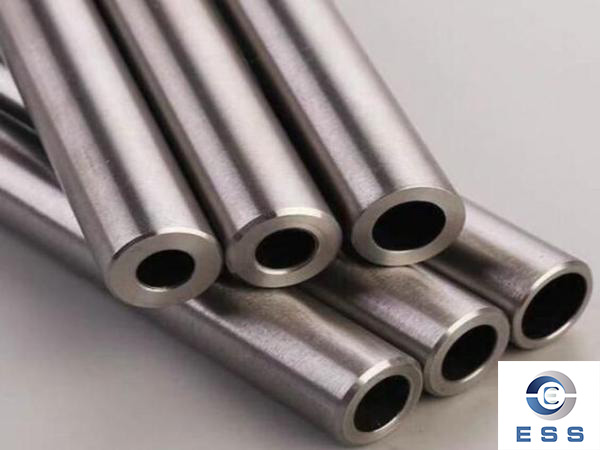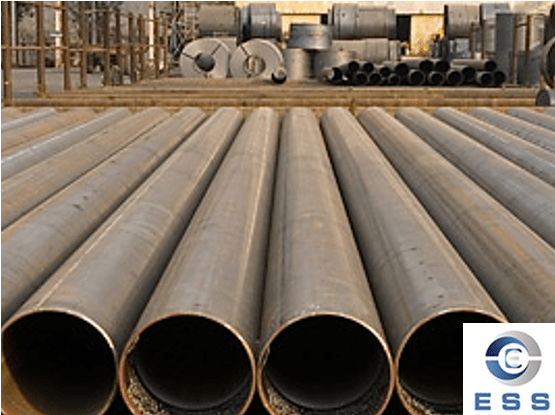Pressure of
precision tubes

Definition of pressure bearing
Seamless pipes are a type of pipe with high strength and high toughness that can withstand use in harsh environments such as high pressure, high temperature and strong corrosion. Its pressure bearing refers to the maximum pressure that the pipe can withstand under a certain temperature and environment. The pressure bearing of precision seamless pipes is generally specified by national standards or industry standards to ensure its safe and reliable use.
Standards for bearing pressure
The standards for bearing pressure of precision seamless pipes are usually considered from the following aspects:
1. The strength and toughness of the pressure-bearing material, including the strength, hardness, plasticity, fracture toughness, etc. of the metal.
2. The size and shape of the pipe, the wall thickness and diameter of the pipe and other parameters will affect its ability to withstand pressure.
3. Factors such as temperature, pressure and medium in the use environment, which will cause corrosion and thermal expansion to the pipe, thereby affecting its ability to withstand pressure.
In national standards or industry standards, the upper and lower limits of the pressure bearing of precision seamless pipes are generally specified to ensure that precision seamless pipes can work safely and stably under normal conditions of use.
Testing methods for bearing pressure
In order to ensure the safety and reliability of precision seamless pipes, the detection of bearing pressure is an indispensable link. At present, the commonly used pressure bearing detection methods are as follows:
1. Water pressure test method: put the precision seamless pipe into water, apply a certain pressure, observe the deformation and leakage of the pipe, and judge its ability to bear pressure.
2. Hanging weight method: use a weight to hang the weight on the precision seamless pipe, increase the load of the pipe, observe the deflection and deformation of the pipe, and judge its ability to bear pressure.
3. Tensile test method: perform a tensile test on the precision seamless pipe, observe the deformation and rupture of the pipe under a certain tensile force, and judge its ability to bear pressure.
The above are the commonly used pressure bearing detection methods, through which the pressure bearing capacity of precision seamless pipes can be comprehensively and accurately evaluated.
Calculation formula
When designing and using precision seamless pipes, it is necessary to accurately calculate and evaluate their pressure bearing capacity. The basic formulas and methods for calculating the pressure bearing capacity of precision seamless pipes will be introduced to help engineers and technicians better understand and apply these calculation formulas.
The basic principle of the pressure bearing calculation formula of precision seamless pipes is to determine the pressure bearing capacity of the pipe through mechanical principles and material mechanical properties based on parameters such as the material, size and working conditions of the pipe. When calculating the pressure, it is necessary to consider factors such as the internal pressure, external pressure, temperature, and material strength of the pipeline to ensure that the pipeline will not break or deform under working conditions.
The basic formula for calculating the pressure of precision seamless pipes includes the following aspects:
1. Calculation formula for internal pressure of the pipeline
The internal pressure that the precision seamless pipe bears during operation is its main bearing pressure. The internal pressure calculation formula generally adopts the following form:
P=(2 S t)/(Dt).
Among them, P is the internal pressure of the pipeline, S is the material strength of the pipeline, t is the wall thickness of the pipeline, and D is the outer diameter of the pipeline. This formula determines the pressure bearing capacity of the pipeline based on the pressure state of the pipeline and the strength of the material.
2. Calculation formula for external pressure of the pipeline
In addition to the internal pressure, precision seamless pipes also need to consider the external pressure imposed on them by the external environment.
The external pressure calculation formula generally adopts the following form:
P=(2 S t)/(D +t).
Among them, P is the external pressure of the pipeline, S is the material strength of the pipeline, t is the wall thickness of the pipeline, and D is the outer diameter of the pipeline. The external pressure calculation formula is similar to the internal pressure calculation formula. Both determine the pressure bearing capacity of the pipeline based on the pressure state of the pipeline and the strength of the material.
3. Calculation formula for temperature effect of pipeline
Under high or low temperature conditions, the material strength of the pipeline will change, and the effect of temperature on the pressure bearing capacity of the pipeline needs to be considered. The temperature effect calculation formula generally adopts the following form:
S=S0 (1 β (T T0)).
Where S is the material strength of the pipeline at temperature T, S0 is the material strength of the pipeline at standard temperature T0, and β is the thermal expansion coefficient of the material. This formula can help engineers consider the effect of temperature on the strength of the pipeline when designing and using precision seamless pipes.
4. Calculation formula for safety factor of pipeline
When calculating the pressure bearing capacity of precision seamless pipes, it is necessary to consider the effect of safety factor on the pressure bearing capacity of the pipeline. The calculation formula for safety factor generally adopts the following form:
σ =P/F.
Where σ is the safety factor of the pipeline, P is the pressure bearing capacity of the pipeline, and F is the design working pressure of the pipeline. The safety factor is an important indicator for designing and evaluating the pressure bearing capacity of the pipeline, which can help engineers ensure its safety and reliability when designing and using precision pipes.
Through the above basic formula, the pressure bearing capacity of precision seamless pipes can be accurately calculated and evaluated. In actual engineering applications, factors such as pipeline installation, use and maintenance need to be considered to ensure that the pipeline can safely and reliably withstand pressure during operation. The pressure bearing calculation formula and method of precision seamless pipes can help engineers and technicians better understand and apply this knowledge, and provide reference and guidance for engineering design and safe operation.
In short, the pressure bearing capacity of precision seamless pipes is one of the important indicators to ensure its safety and reliability, and it is necessary to strictly follow national standards or industry standards for control and testing during production, transportation and use.
Read more: Difference between seamless pipe and seam pipe













 Eastern Steel Manufacturing Co.,Ltd not only improve product production and sales services, but also provide additional value-added services. As long as you need, we can complete your specific needs together.
Eastern Steel Manufacturing Co.,Ltd not only improve product production and sales services, but also provide additional value-added services. As long as you need, we can complete your specific needs together.










